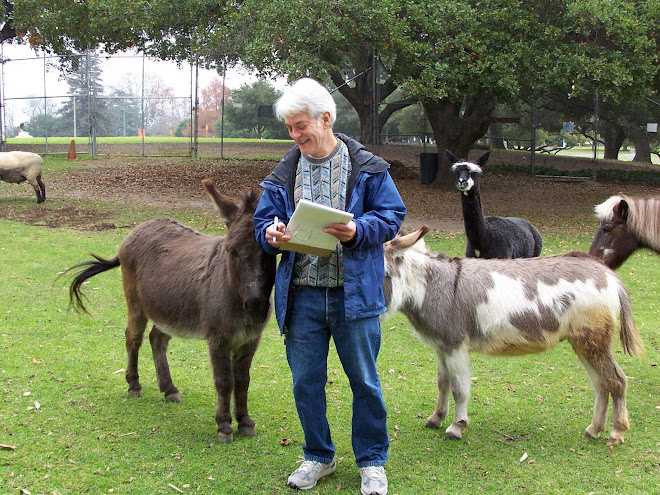
(Above: Blackie's statue)
We're on the cusp of July and August, which means the annual Tiburon leopard shark convention is in full swing again.
A few leopard sharks can be found in the waters off Tiburon all year round, but at this time of year their numbers explode into the thousands. They swim so close to the shore you could reach out and touch them, although I wouldn't advise it.
You can identify them by their spots and three fins. At only a yard long, they're no danger to humans. But it's the closest you will ever get to a wild predator in its natural habitat.
I have no idea why there are so many. I talked to shark experts at the State Dept. of Fish & Game and the National Oceanographic and Atmospheric Administration, and all they could tell me is that nobody knows much about why leopard sharks do what they do.
"Maybe they're feeding, maybe they're mating, maybe they're pupping," said Sue Scott of NOAA. "If you notice them doing any of those things, let me know, OK?"
All I know is that watching them is way cool. Drive over the San Rafael Bridge and take 101 South to Tiburon Boulevard. Turn right on Blackie's Pasture Road and take it to the end, which is Blackie's Pasture. Then walk about 20 yards down to the water. Get there at high tide if you can because that's when they swim closest to shore.
Then, when you're finished watching the sharks, there's one more thing to do: visit Blackie's Pasture.
Blackie was a U.S. Army cavalry horse who lived from 1926 to 1966. He retired in 1938 at age 12, and that's when his real career began.
His new owner kept him in a pasture on the only road into town, so you couldn't pass by without seeing "Old Blackie."
It wasn't long before the locals decided that Blackie belonged to all of them. In spite of his swayback, which got more pronounced every year, they admired him for his pride and military air. People of all ages visited Blackie daily and gave him carrots, apples, sugar lumps and hay.
February 27, 1966, is a date that local residents have burned in their memory. That was the day Blackie collapsed and had to be put out of his misery.
After his death, residents searched for ways to express their grief. The Marin County Health Department granted them special permission to bury Blackie in his own pasture
Children from nearby homes spontaneously erected a makeshift cross to mark his resting place. Other kids wrote poems in his memory and planted flowers on his grave. And from grown-ups, wreaths and other floral tributes poured in for weeks.
Blackie's grave is still there, still covered with flowers and lovingly tended by a group of volunteers who call themselves "Blackie's Brigade." In 1995 a life-sized bronze statue of Blackie - swayback and all - was erected in the center of the pasture.
Blackie lived for 40 years. That's a long time for a horse. Local residents are convinced that it was love that sustained him. And that love obviously endures, 45 years after his death.
So after you see the sharks, check out Blackie's Pasture, too. Bring the kids and take their picture sitting on Blackie's statue.
And tell them Blackie's story so they'll understand that this is history, too, even if it isn't in the history books.














No comments:
Post a Comment